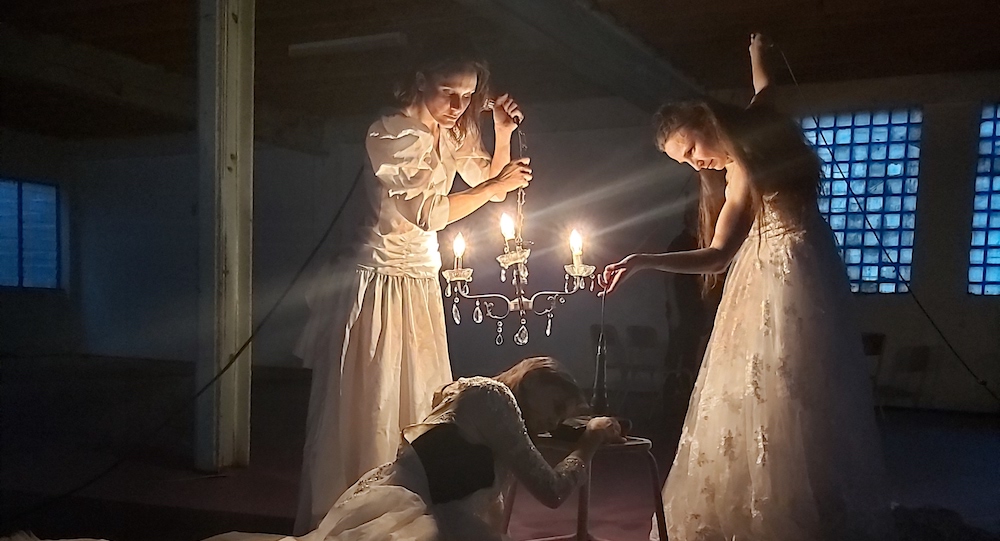The Landlord, Summer Hill, Sydney.
31 March 2021.
The Foul of the Air by The Living Room Theatre and directed by Michelle St Anne, as part of March Dance festival, is a work three years in the making. Based on Charlotte Wood’s book The Natural Way of Things, The Foul of the Air explores feminist themes on a background of violence against women, with the support of Sydney Environment Institute’s ‘Sites of Violence’ project. ‘Sites of Violence’ aims to bring together academics and artists to understand violence and work on new perspectives to problems associated with and perpetuating violence against women and the environment. This work is performed in an abandoned women’s garment factory in Summer Hill. Aptly, abandoned, as the work leads you to feel, in a visceral and confronting manner.
The Foul of the Air is a true collaboration of performance mediums. Along with The Living Room Theatre, three dance artists – Renata Commisso, Imogen Cranna and Cloé Fournier– and score/musical collaboration with several renowned double bass players were as much a part of the physical performance as was anyone inhabiting the space. The work uses spoken word, movement and a score that permeated the mood, the movement and the thought processes as we took it all in.
This was a very real performance; for want of a fancier word (but not really!), real is the only way to describe it. The dancers go on a journey, and although they might be mistaken for being the main players, in the background, the spoken word is making statement, exploring the unhinged-ness of post-trauma, whilst the bass players and their instruments become more imposing and more fluid as the journey progresses. They uphold the mood, whilst the dancers explore what impresses as spoken movement. The work hints at a ‘through the ages’-type narrative, without quite getting to narrative. We see snippets, and a journey is definitely taken; however, it would have felt a little more complete had there been a narrative component to the journey, a thread to be able to connect a little more to the journey of work. There were plenty of anchor points throughout, with high impact value, but there was something missing in the telling to really land the concept.
St Anne was herself the speaker, and gripping was the uncomfortable moment when she had a section of her head shaved, after having danced with abandon previously, almost breaking that sacred fourth wall — showing vulnerability, only to pay for it later with a removal of part of herself. The dancers have a fun moment themselves, handing out chips to the audience (yes, absolutely we got plain crinkles cut!), having fun in a slightly manic fashion, and yes, there was the moment of hysterical laughter, reflective of that all-inclusive psychiatric diagnosis from the 1950s and beyond that labelled all women with displays of emotion (because apparently we were crazy if we were not a picture of serenity at all times) “hysteria”.
The largeness of the warehouse, thick glass bricks, industrial ceiling and markings on the wall by Lucy Baird all added to the immersive experience that sitting in the performance space encourage. Lighting contributed to the persona of the work, adding a tangibility of atmosphere, utilising the many interesting twists and turns in the space and movement — at times the basses looming over the dancers, or creating intimacy within the expansiveness of the space.
St Anne has done an absolutely brilliant job in collating this multimedia sensory journey, fascinating from start to finish, showing many ideas on how violence can be right in front of us but not obvious, and has seeped down through the ages in overt, and not so overt ways. St Anne has made an interesting journey into her experience of Wood’s book, bringing something to life that calls out much food for thought. The Foul of the Air is a great addition to the March Dance festival and a work that will not be easily forgotten.
By Linda Badger of Dance Informa.















